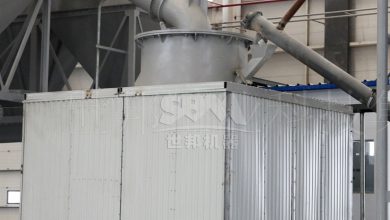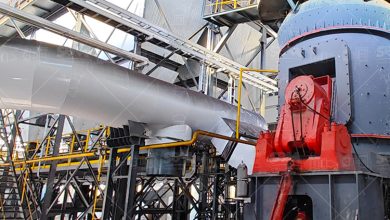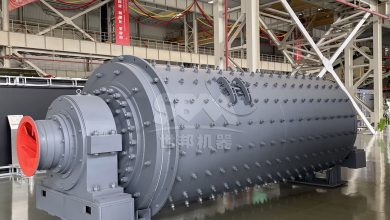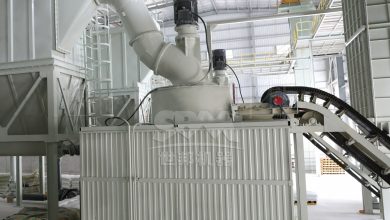Silicon Micro Powder Ultrafine Grinding Mill Manufacturer Explains Downstream Applications of Silicon Micro Powder
Introduction to Silicon Micro Powder
Silicon micro powder, also known as silica fume or microsilica, is a byproduct of producing silicon metal and ferrosilicon alloys. This ultrafine powder is composed of amorphous silicon dioxide (SiO2) particles, typically spherical in shape, with an average particle size ranging from 0.1 to 0.5 micrometers. Its exceptional properties, including high pozzolanic activity, fine particle size, and large surface area, make it a valuable material across numerous industries.
The production of high-quality silicon micro powder requires advanced grinding technology capable of achieving precise particle size distribution while maintaining the material’s chemical properties. The grinding process must carefully control heat generation to prevent crystallization of the amorphous silica, which would diminish its reactivity.
![]()
Key Properties and Characteristics
Silicon micro powder possesses several unique characteristics that contribute to its widespread applications:
Physical Properties
The extremely fine particle size results in a very high surface area, typically between 15,000-30,000 m²/kg. This extensive surface area significantly enhances its reactivity in various applications. The particles are predominantly spherical, which improves packing density and flow characteristics in composite materials.
Chemical Properties
Composed primarily of amorphous silicon dioxide (typically 85-99%), silicon micro powder exhibits high pozzolanic activity. This means it can react with calcium hydroxide in the presence of moisture to form compounds possessing cementitious properties. The material is generally inert, with high resistance to chemical attack from acids, alkalis, and other corrosive substances.
Mechanical Properties
When incorporated into composite materials, silicon micro powder significantly enhances compressive strength, bond strength, and abrasion resistance. It reduces permeability by filling microscopic voids and pores, creating a denser, more impermeable matrix.
Downstream Applications of Silicon Micro Powder
Construction and Concrete Industry
The construction industry represents the largest consumer of silicon micro powder, where it serves as a high-performance pozzolanic additive in concrete and cementitious systems. When added to concrete mixtures, silicon micro powder dramatically improves several key properties:
Enhanced Strength and Durability: The fine particles fill the spaces between cement grains, resulting in a denser matrix with reduced porosity. This leads to significant improvements in compressive strength, often increasing 28-day strength by 20-35% compared to conventional concrete mixes.
Reduced Permeability: The ultra-fine particles effectively block capillary pores, reducing water permeability by up to 90%. This enhanced impermeability provides superior protection against chloride ion penetration, making it ideal for marine structures, bridges, and parking decks where corrosion resistance is critical.
Improved Abrasion Resistance: Concrete containing silicon micro powder demonstrates exceptional resistance to wear and abrasion, making it suitable for industrial floors, heavy traffic areas, and hydraulic structures subject to high-velocity water flow.
Chemical Resistance: The reduced permeability and dense microstructure provide enhanced resistance to chemical attack from sulfates, chlorides, and other aggressive chemicals.
![]()
Refractory Applications
In the refractory industry, silicon micro powder serves as an excellent binding agent and filler material for high-temperature applications. Its properties contribute to:
Improved Green Strength: When added to refractory castables and plastics, silicon micro powder enhances workability and green strength before firing, allowing for better shape retention during installation.
Enhanced High-Temperature Properties: After firing, the silica reacts with other components to form mullite and cristobalite phases that improve hot strength, thermal shock resistance, and corrosion resistance in aggressive environments.
Reduced Porosity: The fine particles fill voids between larger refractory aggregates, resulting in denser linings with improved resistance to slag penetration and metal infiltration.
Polymer and Composite Materials
The unique properties of silicon micro powder make it an valuable additive in polymer composites and specialty coatings:
Reinforcement in Elastomers: In silicone rubber and other elastomeric compounds, silicon micro powder improves tear strength, hardness, and thermal stability while maintaining flexibility.
Epoxy and Polymer Systems: Added to epoxy resins and other polymer matrices, it enhances mechanical properties, reduces shrinkage during curing, and improves thermal conductivity for electronic encapsulation applications.
Specialty Coatings: In protective and anti-corrosion coatings, silicon micro powder improves abrasion resistance, barrier properties, and durability in harsh environments.
Electronics and Semiconductor Industry
High-purity silicon micro powder finds applications in electronic materials and components:
Electronic Encapsulation: Used in epoxy molding compounds for semiconductor packaging, where it improves thermal conductivity, reduces coefficient of thermal expansion, and enhances mechanical strength.
Ceramic Substrates: In the production of multilayer ceramic capacitors and other electronic ceramics, silicon micro powder helps achieve fine feature sizes and improved reliability.
Thermal Interface Materials: Incorporated into thermal greases and pads to enhance heat transfer in electronic devices while maintaining electrical insulation properties.
Oil and Gas Industry
Silicon micro powder plays a critical role in oil well cementing and drilling operations:
Cementing Applications: In oil well cements, it reduces permeability and improves compressive strength development, particularly important in high-pressure, high-temperature wells where conventional cement systems may fail.
Lost Circulation Materials:
The fine particles help seal microfractures and porous formations during drilling operations, reducing mud losses and improving wellbore stability.
Grinding Technology for Silicon Micro Powder Production
Producing high-quality silicon micro powder requires advanced grinding technology capable of achieving the precise particle size distribution while maintaining the amorphous structure of the material. The grinding process must carefully control temperature to prevent crystallization of the silica, which would diminish its reactivity.
Technical Challenges in Silicon Micro Powder Grinding
Grinding silicon materials presents several unique challenges that require specialized equipment:
Heat Generation: The grinding process generates significant heat, which can cause crystallization of amorphous silica, reducing its pozzolanic activity. Effective cooling systems are essential.
Abrasive Nature: Silicon materials are highly abrasive, requiring wear-resistant components in the grinding system to maintain operational efficiency and product purity.
Particle Size Control: Achieving the desired narrow particle size distribution (typically D97 ≤ 5μm) demands precise classification technology.
Explosion Risk: Fine silicon powder can be explosive under certain conditions, necessitating appropriate safety measures in the grinding system.
Recommended Grinding Solutions
For producing high-quality silicon micro powder, we recommend our SCM Ultrafine Mill series, specifically designed for processing abrasive materials to ultrafine sizes while controlling temperature elevation.
The SCM Ultrafine Mill offers several advantages for silicon micro powder production:
Efficient Grinding Mechanism: The three-layer grinding ring design with multiple grinding rollers ensures efficient size reduction with minimal heat generation. The unique grinding chamber design promotes effective heat dissipation.
Precise Classification: The integrated vertical turbine classifier enables precise control of product fineness, achieving consistent particle size distribution from 325 to 2500 mesh (D97 ≤ 5μm).
Wear Resistance: Special alloy materials for grinding rollers and rings provide exceptional wear resistance when processing abrasive silicon materials, significantly extending component life and reducing maintenance requirements.
Temperature Control: The system incorporates effective cooling mechanisms to prevent overheating during grinding, preserving the amorphous structure of the silicon micro powder.
With models ranging from SCM800 to SCM1680, offering capacities from 0.5 to 25 tons per hour, our SCM series can meet production requirements of any scale while maintaining consistent product quality.
![]()
Alternative Grinding Solution
For applications requiring slightly coarser products or higher capacity requirements, our MTW Series Trapezium Mill provides an excellent alternative. With output fineness ranging from 30-325 mesh and capacities up to 45 tons per hour, the MTW series offers:
Enhanced Durability: The anti-wear shovel design and curved air channel reduce maintenance costs and improve operational efficiency.
High Efficiency: The bevel gear overall transmission system achieves 98% transmission efficiency, reducing energy consumption.
Environmental Compliance: Advanced pulse dust collection technology ensures emissions meet international standards.
Quality Control and Testing
Producing consistent, high-quality silicon micro powder requires rigorous quality control throughout the manufacturing process. Key parameters monitored include:
Particle Size Distribution: Measured using laser diffraction techniques to ensure compliance with specification requirements.
Specific Surface Area: Determined by nitrogen adsorption (BET method) to verify the material’s reactivity.
Chemical Composition: X-ray fluorescence (XRF) analysis confirms SiO2 content and impurity levels.
Loss on Ignition: Measures unburned carbon content, which can affect performance in certain applications.
Activity Index: Standardized tests measure the pozzolanic activity compared to reference materials.
Future Trends and Developments
The market for silicon micro powder continues to evolve, with several emerging trends shaping future applications:
Nanotechnology Applications: Ongoing research focuses on producing even finer silicon powders for advanced nanocomposites and functional materials.
Sustainability Initiatives: Increased emphasis on utilizing industrial byproducts makes silicon micro powder an attractive sustainable material in green building initiatives.
Advanced Composite Materials: Development of new polymer and ceramic matrix composites incorporating silicon micro powder for enhanced performance characteristics.
Smart Materials: Exploration of silicon micro powder in functional materials with controlled electrical, thermal, or optical properties.
Conclusion
Silicon micro powder represents a versatile and high-performance material with diverse applications across multiple industries. Its unique properties, including ultrafine particle size, high surface area, and pozzolanic activity, make it invaluable for enhancing the performance of concrete, refractories, polymers, and specialized materials.
The production of high-quality silicon micro powder requires advanced grinding technology capable of achieving precise particle size control while maintaining the material’s beneficial properties. Our SCM Ultrafine Mill series, with its efficient grinding mechanism, precise classification, and wear-resistant design, provides an ideal solution for producing consistent, high-quality silicon micro powder for various industrial applications.
As technology advances and new applications emerge, the demand for precisely engineered silicon micro powders will continue to grow, driving innovation in production technologies and expanding the material’s already diverse range of applications.





